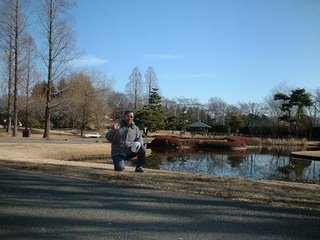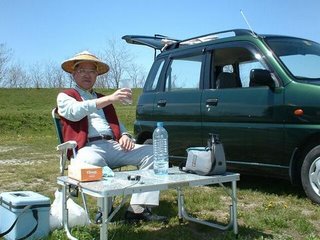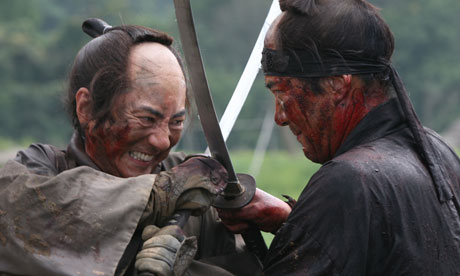According to the book, Japonius Tyrannus, kickball had been an aristocratic pastime since the late Heian period (794-1185) and surprisingly Nobunaga, a passionate falconer and sumo fan, displayed an interest in this surprisingly ceremonial sport.
The kickball matches also allowed Nobunaga to famliarize himself with the various court nobles. At the time, one of the players, Asukai Masanori (1520-94), served as Crown Prince Sanehito's special envoy to Nobunaga. The Asukai family had earned a dominant position as 'masters of kickball' in the Muromachi period (1336 to 1573), thanks to the sponsorship of successive emperors and the Ashikaga shoguns. Nobunaga continued this shogunal sponsorship of the Asukai, even calling himself Masanori's 'kickball pupil' on one occasion.
I think it would have been pretty cool to have played kickball with the great warlord Nobunaga. I would be careful to always let him win of course.
As Toranosuke correctly pointed out below in his comment, the sport is not like today's version of kickball. The ancient sport is called kemari and is more like the game of hackysack or juggling a soccer ball. There were varying numbers of players, between 2 and 12, and the ball was passed between players. There was no tackling or vying for the ball and the game was not competitive apparently but was more dignified and ceremonious however it did (and does) require a great amount of skill.
As Toranosuke correctly pointed out below in his comment, the sport is not like today's version of kickball. The ancient sport is called kemari and is more like the game of hackysack or juggling a soccer ball. There were varying numbers of players, between 2 and 12, and the ball was passed between players. There was no tackling or vying for the ball and the game was not competitive apparently but was more dignified and ceremonious however it did (and does) require a great amount of skill.














